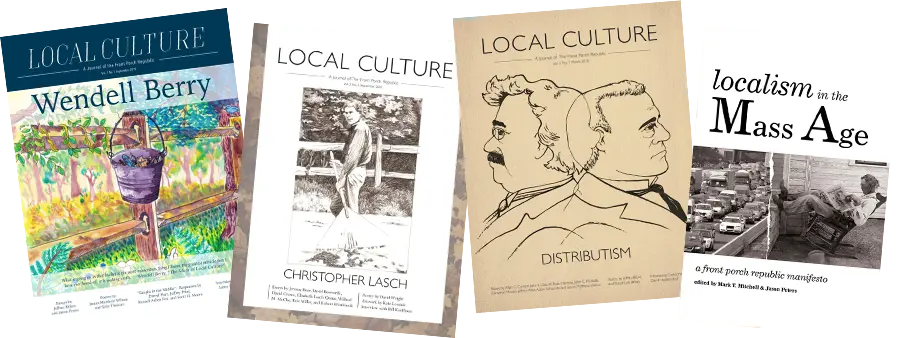This essay is adapted from a speech delivered at the 2025 Lamppost Literary Conference hosted at Oklahoma Baptist University.
As of this Academic year, I’m the Dean of Education at a Christian Classical school in Oklahoma City called the Academy of Classical Christian Studies. I began work there as a fourth-grade teacher some ten years ago, and I’ve since taught many subjects at multiple levels, with an emphasis on modern and classical history and literature and rhetoric and writing. My reflections this afternoon are the result of an ongoing and now roughly ten-year-old project of intellectual and practical maturation (so far only partially successful), that I’ve carried out in the classroom with students, in conversations with fellow faculty, and during long summers of curricular revision. I should like to speak about three things in particular—what we’re talking about when we talk about teaching, what we’re thinking about when we try to understand what the good of the Canon is, and why anyone might want to continue reading The Great Gatsby 100 years after its initial, largely unsuccessful publication in April 1925, and especially how one should think about reading and teaching it.
These are interrelated topics, but I’d like to take them each in turn. My aim, ultimately, is to suggest that education is a fundamentally human enterprise (and so inherently irreplaceable by various kinds of non-human actors or machines). A particularly literary or humane education has, as its good end, the inculcation of a certain stable disposition. I want to suggest that students should study “the canon” or “the tradition” (I’ll use both terms interchangeably) so that they might themselves, in this time of great uprooting and restlessness, be rooted and have a place to stand. The canon is a place to stand. And, in the centennial year of Gatsby (a book I’ve taught a few times as part of our modern literature/history sequence), I want to think with you about how this “place to stand” allows us to see Gatsby clearly as a true but troubling contribution to American literature and to the classroom. It is, in other words, a good and dangerous book, and one we teach wrongly to our peril.
The Aims of Teaching
To begin, what are we talking about when we talk about teaching? What is it, and what is its aim? Teaching is an embodied act of moral formation which has, as its proper goal, the turning of the soul away from error and toward truth. The theologian Stanley Hauerwas, in his introduction to Luigi Giussani’s The Risk of Education, has written that “Education is moral formation.” Such formation happens primarily through what we can call a dynamic, mimetic interplay between student, text, peers, and teacher. The matter, as it were, of every lesson isn’t the so-called “lesson plan and its goals.” Rather, the matter of every lesson is the text at hand, the student community, and the person and posture of the teacher. What isn’t happening straightforwardly or fundamentally is “information transfer,” material clearly covered (though of course there is always some of this). What is happening is always the conscious or unconscious modeling of and assumption of roles within the context of the classroom’s hierarchical community.
Put simply, every classroom situation is something like this: each student ceaselessly adjusting both her interior life and her external disposition to fit the main object of her attention—whether passage, or peer, or teacher. What “turns the soul” of the student may be the text she reads, or the peers she seeks to impress, or the teacher who stands at the front. There’s a maturity and discipline every student must grow in when it comes to her ability to control and sustain attention. Nevertheless, the teacher is the primary, repeated object of each student’s attention, and so is the primary object of the lesson. Socrates is paradigmatic, here, as teacher. His student, Plato, places him as the imitable center of each dialogue (true regardless of the accurate historicity of various dialogues themselves). The teacher—older, knowledgeable (whether or not he admits it), practiced, skilled—stands as the locus of every classroom’s formative potential. And it is to this sometimes inadvertent formative potential that the late German philosopher Robert Spaemann refers when he writes that “education is a side-effect of interacting with children.” This is not to say that nothing can be directly learned. It is, rather, to say that what is indirectly learned is just as or even more important.
Teachers and professors, then, have a difficult but unavoidable obligation. Each teacher stands as a paradigm of adulthood, one among various models of maturity. So it seems to me true that a primary, if not the primary, aim of teaching is to embody with self-awareness and purpose the end result of one’s discipline, to take up not simply a subject but a “way of being” in the world. “If you follow my path,” each teacher is always speechlessly saying, “this is who you may become.” Every teacher is, in her bearing, an icon, an image. Beholding this image, for good or for ill, students are variously transformed. As Christ says in the Gospel of St. Luke: “The disciple is not above his master: but every one that is perfect shall be as his master” (Luke 6:40).
The Good of the Canon
Put in a slightly different way—the task of any teacher, but perhaps most clearly the task of a teacher of literature, is a moral and formational task. It is a task primarily conducted by means of the teacher’s dramatic (meaning intentionally performed) mediation of an established and on-going conversation sometimes called “the canon” and sometimes called “the tradition.” The boundaries of this conversation are somewhat permeable and generally expansive, but the telos, or end or highest good of this conversation is not. From very early this inherited conversation concerns the proper shape or form of a human life within the context of a transhuman community, meaning, a community comprised of inanimate and animate beings, either lower or higher than human beings. This community comes to be called The Great Chain of Being, but all that’s implied in that lofty term can be put more straightforwardly in this way: each person lives a temporally, geographically, and socially bounded life consisting primarily of value-laden and inherent obligations or offices that are and will ever be tested by forces natural and supernatural, some of greater, some of lesser, One of ultimate and all-sustaining power. Seen in this way, the canon is and always has been a “canon for life.” The canon is an inherited, human conversation that always presupposes Socrates’ famous statement in Plato’s Apology: “The unexamined life is not worth living” (even when a work ultimately arrives at a rejection of Socrates’ idea, it does so always after the examining).
The specifically literary works within this long-standing conversation exercise humanity’s definitive capacity for and proclivity toward imagination. They re-present various facets, components, arrangements, and movements of the community and its members. The test of these works and their value must, in the end, be their cumulative and individual capacity to express reality and to inculcate in the reader a posture appropriate to that Reality—be it by positive or (more dangerously but no less importantly) negative example.
This is to say that literature exercises and forms the moral imagination because it uniquely accesses the mimetic underpinning of all learning. It invites and rewards participation—accepting or rejecting, praising or blaming, honoring or disparaging, assuming now one and now another of the roles narrated and described.
I do not intend this to be an exhaustive account of the myriad goods and pleasures offered by reading great or even good books. I hope, rather, to sharply focus on one often overlooked essential of our classroom practice—the testing of works by the touchstone of the tradition. The tradition, the canon, gives the teacher and the student a place to stand and to see, with humility but with real and not contrived authority, the quality of a given literary work—most especially the quality of a work’s contribution to the long-established, on-going, and necessary conversation.
This seems to me to be exactly the point of C.S. Lewis’s first essay in The Abolition of Man. In it, Lewis objects strongly to literature textbooks that have, as the chief goal of their lessons, the inoculation of students against propaganda and advertisement. Obviously, Lewis does not think that propaganda or advertisement should be embraced. But Lewis sees a real problem with the method of these attempted inoculations: the teaching of the art of “debunking” or “critical analysis” or what we might now call the hermeneutic of suspicion—the aim always to see the manipulative will-to-power on the far side of any discourse. Lewis sees this practice to be what it is: morally corrosive. Literary study ought, instead, to introduce students to and train students in the values of the tradition.
To take one example, consider the faux, self-aggrandizing, and performative nationalism especially prevalent in our own day. It can be countered by cynicism and disillusionment. But it is more truthfully countered by repeated, careful exposure to the paradigms of a true patriotism—the models of those who have deeply and self-sacrificially loved their places and the people who sustained them and were sustained by them. Such a list includes Homer’s Hector and Plato’s Socrates and Dante’s Florentine Pilgrim and Shakespeare’s Henry V. These models are not more useful; they are more true. What Lewis would, I suppose, have to call “Men with Chests” (the reverse of his famous “men without chests”) are students whose sentiments and imaginations have been formed by a sustained exposure to the canon as mediated by a teacher whose own life is shaped by this very conversation. The canon as a long-standing, substantive conversation focusing on and elucidating the human significance of things—this is a place on which one can stand and from which one can see the good and ill of our own and other places and times.
The Great Gatsby
To see how this approach works, I’ll now turn to The Great Gatsby. In the novel’s concluding paragraphs, Nick Carraway, the narrator, has something of an epiphany as he recounts a moment from his final night on West Egg. This epiphanic moment begins,
And as the moon rose higher the inessential houses began to melt away until gradually I became aware of the old island here that flowered once for Dutch sailors’ eyes—a fresh green breast of the new world. Its vanished trees, the trees that had made way for Gatsby’s house, had once pandered in whispers to the last and greatest of all human dreams; for a transitory enchanted moment man must have held his breath in the presence of this continent, compelled into an aesthetic contemplation he neither understood nor desired, face to face for the last time in history with something commensurate to his capacity for wonder.
And as I sat there brooding on the old, unknown world, I thought of Gatsby’s wonder when he first picked out the green light at the end of Daisy’s dock. He had come a long way to this blue lawn, and his dream must have seemed so close that he could hardly fail to grasp it. He did not know that it was already behind him, somewhere back in that vast obscurity beyond the city, where the dark fields of the republic rolled on under the night.
Gatsby believed in the green light, the orgastic future that year by year recedes before us. It eluded us then, but that’s no matter—to-morrow we will run faster, stretch out our arms farther….And one fine morning—
So we beat on, boats against the current, borne back ceaselessly into the past. (Fitzgerald 116-17)
The Great Gatsby, published in April 1925, is now, at the relatively young age of 100, considered to be one of the most significant twentieth-century contributions to American literature. Fitzgerald’s novel, in spite of its initial commercial failure, has become a staple of high school English reading lists. I venture that most of us have at least a passing familiarity with the novel’s basic plot. In brief synopsis, the novel presents the disillusioned recounting of Nick Carraway, a thirty-two-year-old, upper-class Midwesterner who tells the tragic story of his brief summer in New York two years before, wherein his ostentatiously wealthy and eccentric neighbor, Jay Gatsby (whom he’ll learn was once named James Gatz and originally from North Dakota) makes an ultimately unsuccessful and doomed attempt to reconnect romantically with the lost love of his youth, Daisy Buchanan. She is initially enthusiastic and enraptured but cannot ultimately pledge her unfailing love. She has become a wife—albeit to the unfaithful and unpleasant but hulky and hunky Tom Buchanan—and a mother—to a little, benignly neglected girl. As you’ll remember, shortly after Daisy’s refusal of Gatsby for “wanting too much,” she inadvertently and vehicularly kills Myrtle Wilson (her husband’s sometime adulterous lover) with Gatsby’s memorable car. Myrtle’s husband, with some help from Tom, finds and shoots Gatsby and himself, and Nick, shocked by the callousness and cowardice of a society that fails to honor or acknowledge Gatsby’s death as anything but gossipy spectacle, flees the East, returns to the Midwest, and recounts his tale after two years of brooding.
The novel’s chief achievements appear basically two. First, the novel is a triumph of intricate form, coherent and evocative symbol, and wondrously lyrical prosody. The symbolism especially has provided endless fodder for the kind of English essays generative AI has all but destroyed. What teacher could once resist inviting students to puzzle over the significance of the green light or the voice that sounds like money or the eyes of Dr. T.J. Eckleberg? Fitzgerald’s seemingly endless and thoroughgoing revisions—even to the end of his life (Corrigan 190-92)—result in an unusual and engaging level of intention that rewards close and repeated reading. Second, Fitzgerald’s astonishing and powerful concluding scene, which manages to masterfully connect the relatively straightforward and doomed love affair of the novel to the identity and history of America itself. It is, I am convinced, the novel’s last two pages, even its last two paragraphs, that ensure its enduring place in American classrooms. These pages immediately invite endless reconsiderations of the novel’s ultimate point—what might Fitzgerald’s novel be suggesting about our identity or failings as a nation? About the interaction of individual human nature and the collective folly or success of our e pluribus unum?
Are literature classes and literature teachers adequately prepared to raise such questions? Moreover, is the novel prepared to reward the asking of the kinds of questions this passage seems to raise? To be transparent, I do not believe Fitzgerald himself was sure of or ultimately succeeded in having any answers—I think the novel to be, though undoubtedly great, the work of a despairing, younger man whose language dances with marvelous style above a thinly veiled abyss. So it’s a mistake to teach the novel unexaminedly as primarily a vehicle for the skills of “literary analysis,” though it may, helpfully, empower students to grasp the elements which form or communicate a novel’s meaning. It may also, and I think dangerously, leave students unpreparedly open to the despairing slant at the back of Fitzgerald’s style.
Students do not need merely to be taught how a novel or great work of literature communicates its meaning but must, further, be taught the external reference points of this meaning. The rightly famous conclusion of The Great Gatsby suggests how impossible it is for a crass and exploitative materialism to fulfill humanity’s deepest desires. It suggests, further, the doomed instability of an American experiment that is fundamentally rooted in such empty desire. This truth must be seen with clear eyes, especially in the midst of our own day’s misguided, increasingly materialist cultural moment. What Fitzgerald says here about America in the fated 1920s now seems freshly true. But these paragraphs follow the novel’s larger, almost systematic strategy of carefully balanced antithetical negations. And the first paragraph about the foolishness of our unfounded desiring is immediately followed by the despairing assertion that we are all doomed before we begin—but that our unceasing restlessness itself is or can be somehow beautiful (though doomed) if we enact it earnestly.
Teaching the novel’s external reference points of meaning would mean interrogating such a conclusion by placing it alongside one’s own life as it has been informed by the long-standing conversation about one’s place and the possibilities of finding contentment and meaning within one’s place. Students steeped in the canon can weigh Nick’s assessment of Gatsby with Thucydides’ assessment of Pericles, or Homer’s assessment of Hector. They could see, in Virgil’s Aeneid and Livy’s History of the Early Roman Republic how greed and self-interest undermine but self-sacrifice and piety sustain human communities across time. Dante’s Florentine pilgrim and Shakespeare’s “Happy Few” at Agincourt are models of those whose love of city and family spur great and even salvific work. Dickens’s Pip, as he walks with Estella away from the ruins of Satis House in Great Expectations, parallels Nick’s disillusionment, to be sure, but he sees beyond that disillusionment to the possibilities of “no shadow of parting.” We could add, expansively, how Lincoln’s Gettysburg calls upon our students to take up the great work of unity on the far side of conflict. Such a catalogue of references is not an exhaustive list. It stands in need of continued conversation and correction. But it is a catalogue that commends the real work of judgment that makes possible stability and repair, a work worth even one’s death, or, what may prove more difficult, a lifetime of obscure fidelity. Teachers uniquely embody this work, in their various ways. Their obligation is to become its image in their classrooms—emblems of adulthood and maturity, mediators of a great tradition.
Teaching the novel now, I would point out to my students that the novel’s profoundly despairing conclusion is almost immediately preceded by another reflection, one about a place not empty with the vain desire of tradesmen but relatively stable and whole and full of a quiet beauty. It’s a place made possible by cycles of return not rooted in futility but in the festivals of a great and new and lasting hope. This better passage begins:
One of my most vivid memories is of coming back West from prep school and later from college at Christmas time. Those who went farther than Chicago would gather in the old dim Union Station at six o’clock of a December evening, with a few Chicago friends, already caught up into their own holiday gayeties, to bid them a hasty good-by. I remember the fur coats of the girls returning from Miss This-or-That’s and the chatter of frozen breath and the hands waving overhead as we caught sight of old acquaintances, and the matchings of invitations. . . and the long green tickets clasped tight in our gloved hands. And last the murky yellow cars of the Chicago, Milwaukee & St. Paul railroad looking cheerful as Christmas itself on the tracks beside the gate.
When we pulled out into the winter night and the real snow, our snow, began to stretch out beside us and twinkle against the windows, and the dim lights of small Wisconsin stations moved by, a sharp wild brace came suddenly into the air. We drew in deep breaths of it as we walked back from dinner through the cold vestibules, unutterably aware of our identity with this country for one strange hour, before we melted indistinguishably into it again.
That’s my Middle West—not the wheat or the prairies or the lost Swede towns, but the thrilling returning trains of my youth, and the street lamps and sleigh bells in the frosty dark and the shadows of holly wreaths thrown by lighted windows on the snow. I am part of that, a little solemn with the feel of those long winters, a little complacent from growing up in the Carraway house in a city where dwellings are still called through decades by a family’s name. (Fitzgerald 113)
So Fitzgerald’s novel is of two minds, wanting to embrace a quieter life of hopeful returning but seeing, almost at the same time, in various places of progress and power, vast and teetering illusions of an empty and unfulfillable dream. Are we, as teachers, prepared to commend to our students a life of reality over a life of vain illusion? Do we recognize that as part of the lasting good with which we have been entrusted?
The long-standing and continuing conversation of works and lives with one’s own life, a conversation that empowers a way of being, should be thought of and taught as a canon for life, informing the sensibility and intuition and imagination, providing each student, each teacher, with a place to stand. It ennobles. It expands the breadth and depth of one’s vision. It empowers integrity even as it challenges, even as it assures. It is, above all, a humanizing conversation that helps each who receives it and seeks to live it to set their faces toward the Truth like flint, helping them to become, in their own lives and places, living instantiations of a beauty far less ostentatious but far more true.
A Note on Citations
These remarks include citation of two works. The first is The Great Gatsby, in the Norton Critical edition of 2021 edited by David Alworth. The second is Maureen Corrigan’s So We Read On, an engaging reflection on Fitzgerald and his greatest work, published in 2015.







